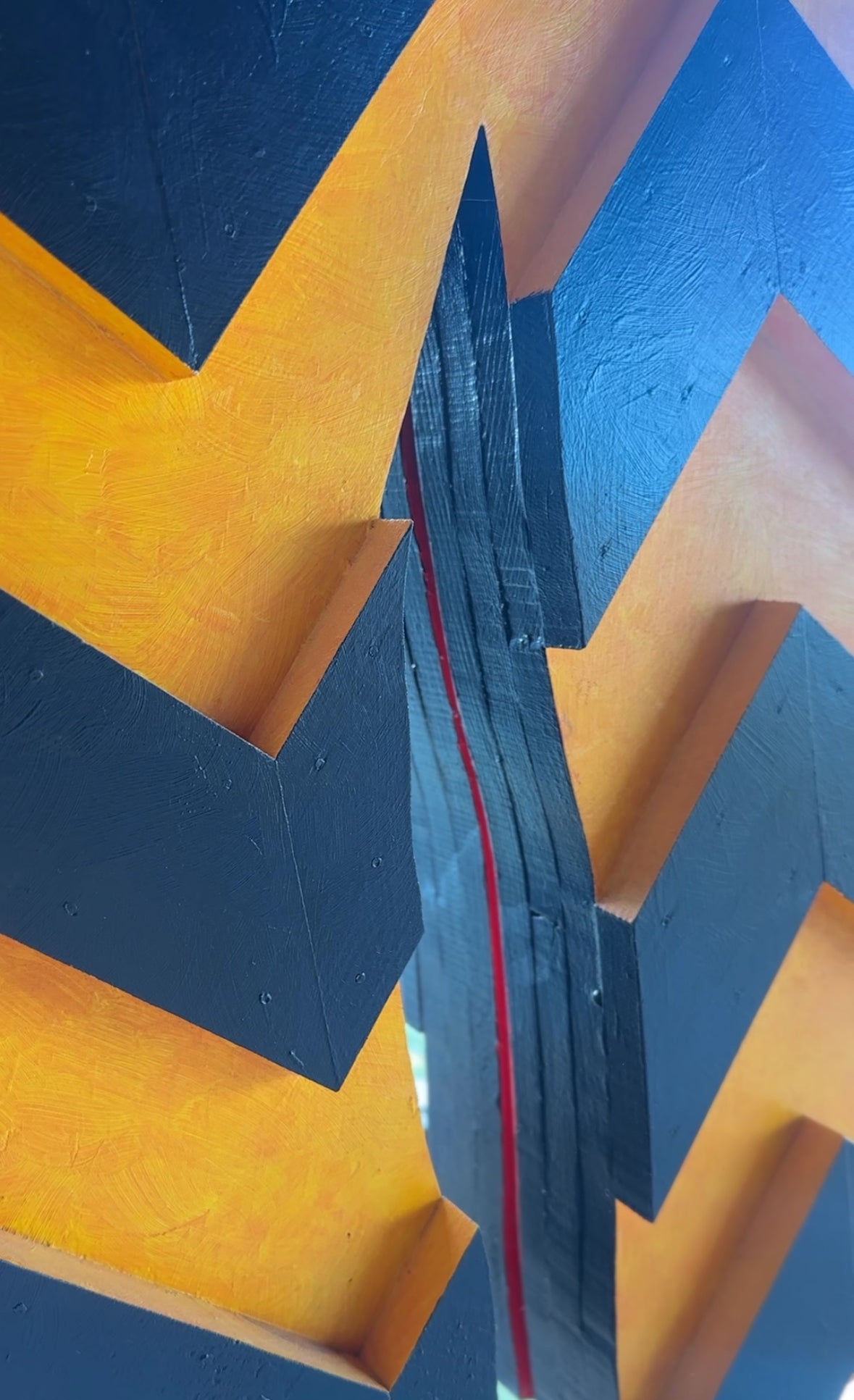
Danger Zone by John Acorn
Signature Work: "Danger Zone" (Camouflage Man Series)
One of Acorn’s most visually arresting and thematically layered works is “Danger Zone,” part of his Camouflage Man series. This sculpture is a life-sized, human-shaped figure rendered in thick, industrial materials and marked by bold, high-contrast black and yellow chevron stripes. The piece is mounted on large red X-shaped “feet,” further intensifying the visual language of hazard, warning, and construction.
A Human Warning Sign
Unlike traditional figurative sculpture, the Camouflage Man is anonymous, faceless, and symbolically overloaded. In “Danger Zone,” Acorn transforms the human body into a kind of signpost—a figure overwhelmed by the same visual systems used to direct, caution, or control us in public and industrial spaces. The chevrons camouflage the figure while also drawing the viewer in. The bright, repeating pattern is as much a warning as it is a disguise.
The title “Danger Zone” deepens this complexity. It refers not just to the aesthetic language of caution, but to the psychological and social space in which people may lose their individuality—becoming passive figures within a broader mechanized or regulated society. As in much of Acorn’s work, there's a biting wit here: the human form becomes both the message and the medium, a stand-in for how we adapt, obey, and often vanish into our environments.
John Acorn: Biography & Artistic Legacy
John Acorn (b. 1935) is a revered sculptor, educator, and conceptual artist whose work has significantly shaped the artistic identity of the American South. Known for his provocative metal sculptures and intellectual humor, Acorn’s career spans more than four decades of influence in both the studio and the classroom.
Originally from Texas, Acorn received his B.F.A. from the University of Texas and his M.F.A. from the Cranbrook Academy of Art, a formative institution in American modernism. In 1961, he began his teaching career as an assistant professor at Clemson University, where he played a pivotal role in shaping the sculpture program. Over the course of nearly four decades, Acorn became a central figure in the development of the arts at Clemson, ultimately retiring as Department Chair in 1998. His legacy there is deeply entwined with a generation of Southern artists who were shaped by his vision and uncompromising approach to form and meaning.
Acorn’s work—frequently composed of fabricated and cast metal—is recognized for its playful surfaces, visual puns, and architectural rigor. His sculptures often examine themes of camouflage, identity, public space, and industrial language.
Choose options
